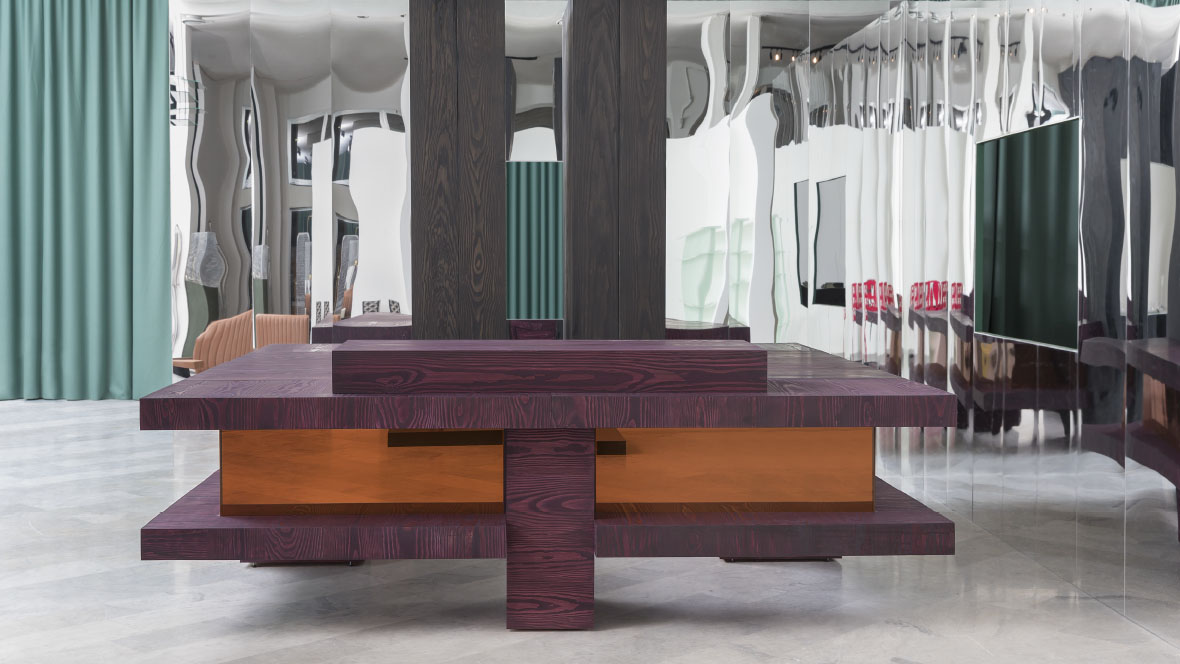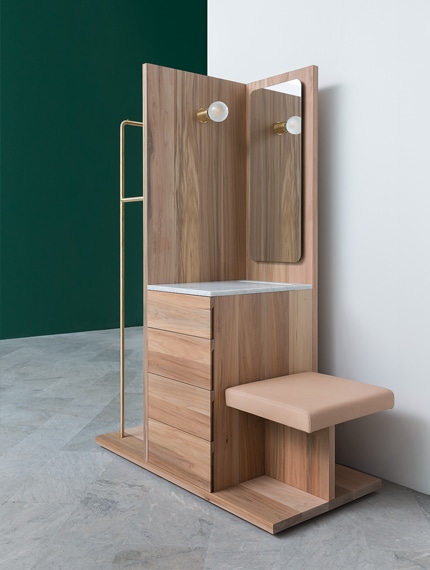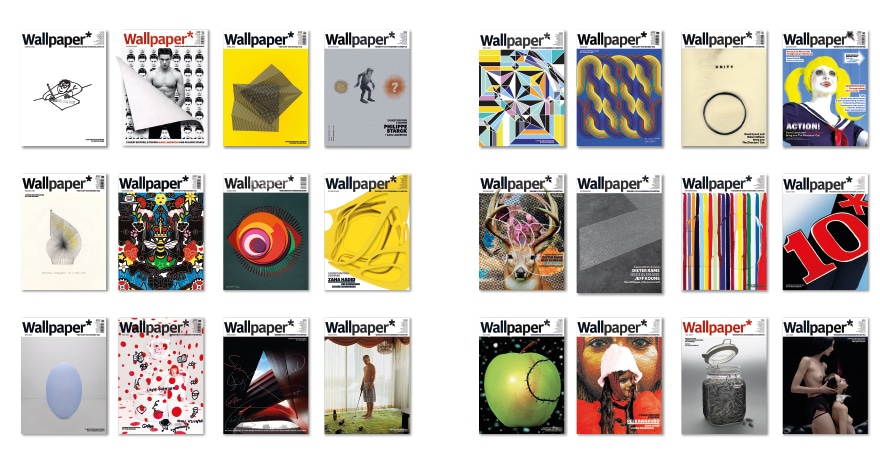
Tom Dixon Talks to Tony Chambers
Wallpaper*, the world’s foremost design and lifestyle magazine celebrates its 20th anniversary this September with a 500+ page issue and an exhibition at Cork Street Galleries. Here, Editor-in-Chief Tony Chambers talks to designer Tom Dixon about two decades of design.
Tom Dixon: Twenty years ago, way back in 1996, what were you doing?
Tony Chambers: I was working as art editor at The Sunday Times Magazine struggling with the desire to create a stylish product that also satisfied the needs of the masses. Design was always an obsession. I was also part of a team – along with Simon Mills, now on staff at Wallpaper* – who introduced an interiors supplement called Inside. I think we were the first magazine in the UK to feature Marc Newson.
TD As someone working in a different area of the media at the time, what do you remember about the launch of Wallpaper*?
TC For the global design community I think the launch of Wallpaper* was a bit like JFK’s assassination – everybody remembers where they were when it happened. I liked it but I was only half pleased. It was a bit like that moment when the cult band you were really in to suddenly got a hit record and became popular. I saw Wallpaper*, read an article about Berthold Lubetkin (one of my architect heroes) and thought, hang on, this is a magazine about my stuff. And you? As I recall, back in 1996, Tom Dixon was a workshop based outfit producing small runs of furniture. You were still very much the hands-on metalworker back then, with a small, young team of like-minded talents, going to work in a boiler suit and experimenting with new materials, is that correct?

‘Butler’ stand, David Chipperfield Architects, E15 and AHEC for Wallpaper* Handmade
TD Not completely. Yes, I had 17 youths doing metalwork in a big warehouse in Vauxhall, but by then I also had a small retail shop in Notting Hill called SPACE. I had a plastic production company called EUROLOUNGE and had already been working with the luxury Italian brands like Cappellini and Moroso for several years. Your own transition was making the jump from art department to editor-in-chief, how do the two roles differ?
TC Wallpaper* is very much a visual magazine so the transition wasn’t that hard. But I also think that working for a national newspaper provided me with a good grounding in disciplined journalism – how to tell a story with both words and pictures. Do you remember the launch of Wallpaper*? What did you think of it?
TD Sure thing. It was great to see a breadth of subject matter under one umbrella, because before Wallpaper*, magazines had tended to stay in their own specialist ghettos. What really struck me was the glossiness – interiors, products and architecture being treated with the same production values as fashion. I also remember the pithy, ironic tone of voice of the writers which was super refreshing.
TC In 1998, just two years after Wallpaper*launched, you became the creative director at Habitat, how did that change the way you worked? Did being part of a huge retail operation like Habitat, and its former owner, IKEA’s Ingvar Kamprad, alter your perspective on product, branding and marketing, or change the career outlook and ambition for ‘Tom Dixon’?

Wallpaper* Handmade, the brand’s flagship project, has brought together the world’s finest creative minds and manufacturing talents to create one-of-a-kind pieces since 2010. Pictured is the 2016 exhibition, Hotel Wallpaper* which presented a vision of the ultimate home away from home for the design-savvy traveller. Magazine rack, Vladimir Kagan and H Furniture
TD Completely. Such a radical change of perspective to working on your own. The company at the time was 2,000 employees, a quarter of a billion dollars and 70 stores all over Europe, so the culture shock was immense. Being part of the IKEA empire gave me insight into the extraordinary machine that is IKEA. Global Sourcing Communication. Retail. Branding. All this stuff became my trade, on top of design and creative direction. During that period I effectively gave up designing products for 10 years, but I came out of it with a completely different perspective and the knowledge that I had to approach design in a radically different way.
TC Sometime in the noughties, interest in design seemed to explode in the UK. Were you as surprised as me so see Arne Jacobsen egg chairs appearing in branches of McDonald’s?
TD Not at all. I guess I was surprised at first that they were actually buying the real thing, but then they stopped. Certainly that explosion of interest was good for our respective businesses. And now there is a more fertile ecosystem surrounding design, and there is a more general interest in contemporary design. When I first started the default style was Victorian Chintz.
TC London’s urban landscape is unrecognisable from 1996. Take us back 20 years and tell us how it was different, and do you think that the endless development has been a good thing for the city?
TD It’s an unbelievably cosmopolitan city compared to 20 years ago – more coffee, more crime, more commerce and more culture than we could ever have anticipated. It’s just a bit of a shame that there has not been enough attention given to urbanism and the public realm (affordable housing, parks, public spaces, etc) as is befitting for such a forward looking metropolis.
TC How do you think the World Wide Web has impacted on the business of design and the way designers are portrayed in the media?
TD The Web is just in the beginning of a complete reordering of the relationship between designers, manufacturers and consumers. With the low entry barrier to communications, marketing and commerce, and the development of digitalised manufacturing, we are going to see a monster shift in the way designers address the world and how thing are made and sold.
It honestly feels like the beginning of a very big adventure. We are only just starting to reach a scale that makes sense of all our ambitions, now we can really accelerate into new categories, new collaborations and new typologies. But for a magazine, 20 years is a long time to keep things fresh and relevant, right? Particularly in the attention deficit disorder trades that Wallpaper* inhabits. Is there a recipe, a constant that you drum into your people, or is it more about constant evolution?

32 Wallpaper* artist-designed subscriber covers
TC It’s our staff that keep things relevant and fresh. We attract a passionate, fiercely vocational group of people who are not only hard working, but who also have an innate and instructive understanding of the Wallpaper* aesthetic and lifestyle, and are always looking for the next new thing. We’re also very international. Our office is like the United Nations, it’s not unusual to hear Finnish, Norwegian, German, French, Spanish or Portuguese spoken across the desks.
TD Total and constant fabulousness oozes from all parts of the Wallpaper* empire. Are there any bits hidden away at all that are less polished and glamorous that you can tell us about? And how much of a glossy Wallpaper* life do you personally live – the private jets, the handmade cutlery and minimal brightly coloured backdrops etc, please do tell.
TC Sadly, there are no private jets. But I have lived in the Barbican for 22 years in the midst of some seriously confrontational Brutalist architecture. I have several recognisable chairs, plenty of beautiful books and paintings, and my sneakers are Lanvin. The office is a bit messier than you might think but it does look out onto the spectacular Herzog & de Meuron Tate Modern extension. So, yes. Some fabulousness, but also some pints of lager as well as the Negronis. Of course, we are always very flattered when things / environments / buildings are described as ‘very Wallpaper*’, in your opinion, Tom, what does that mean exactly?
TD Ha! To me, ‘very Wallpaper*’ means beautifully made, beautifully presented and preferably rare, with a strong whiff of elitism Is that about right?


